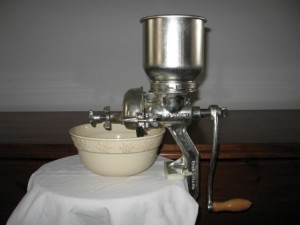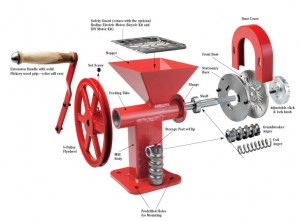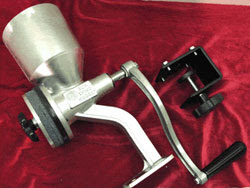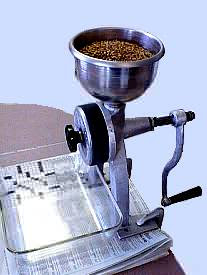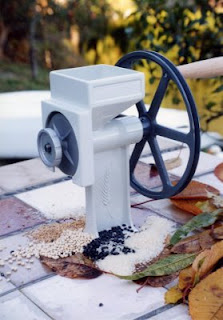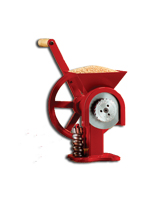 |
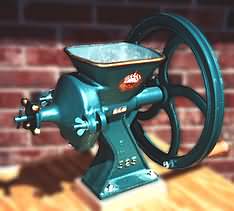 |
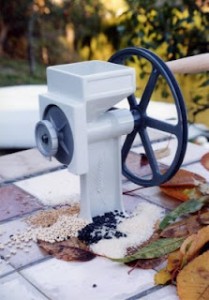 |
Further research took me far and wide, but the pattern emerged: all the mills costing less than $400 were more like toys. They had small burrs in steel, cast iron, or even stone or ceramic, and they were usually hard to turn for fine flour, and some didn’t hold their settings well. I’ll save you some time and money by writing this right now: if you are serious about grinding your own flour, forget all of the cheaper mills. Don’t waste your time, and don’t spend your money. Get a serious mill, one that has these qualities:
– Serious mills have serious burrs: well made in tool-grade steel or iron, having larger diameters, 5″ or more. These massive burrs absorb heat generated during milling, and that helps keep the flour cool so as not to spoil the natural oils. The size gives a much greater grinding surface, so they mill much faster. Other things being equal, 5″ burrs grind nearly 60% faster than 3″ burrs;
– Serious mills have large cast iron flywheels with comfortable wooden handles. The diameter of the flywheel (or the length of the bar holding the handle) determines the length of the lever arm. The longer the arm, the easier it is to turn the mill. A heavy flywheel helps you keep going when the grain is really hard, like hard wheat or popcorn;
– Serious mills have large grain hoppers that don’t need to be refilled several times during the milling process;
– Serious mills may have clamps for light temporary duty, but they can be bolted down for stability during higher volume production;
– Additionally, serious mills have been made for years by established companies, and most or all of the bugs have been worked out.
In short, the serious mills work. The serious mills can reduce the hardest grains to a much finer flour much more easily and much faster than the “toy” mills. I know of only three serious hand-turned mills in the world, and I’ll list them in the order that I came to know them: the Country Living mill, the Diamant mill, and the GrainMaker mill. Read on for a review of each of them.
~Craig MacDonald

